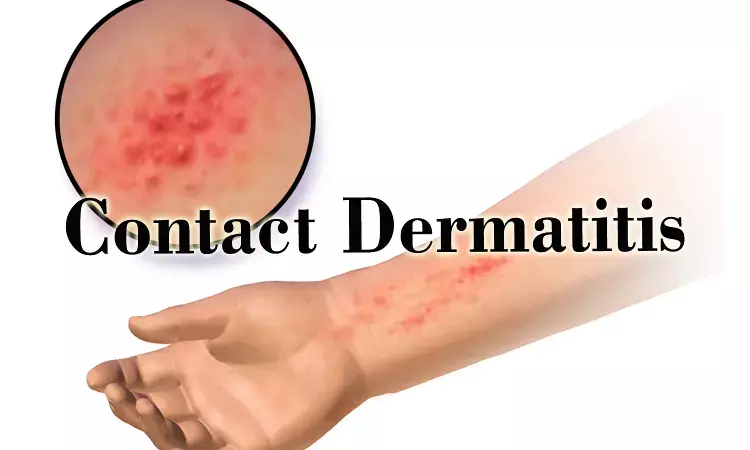- Home
- Medical news & Guidelines
- Anesthesiology
- Cardiology and CTVS
- Critical Care
- Dentistry
- Dermatology
- Diabetes and Endocrinology
- ENT
- Gastroenterology
- Medicine
- Nephrology
- Neurology
- Obstretics-Gynaecology
- Oncology
- Ophthalmology
- Orthopaedics
- Pediatrics-Neonatology
- Psychiatry
- Pulmonology
- Radiology
- Surgery
- Urology
- Laboratory Medicine
- Diet
- Nursing
- Paramedical
- Physiotherapy
- Health news
- Fact Check
- Bone Health Fact Check
- Brain Health Fact Check
- Cancer Related Fact Check
- Child Care Fact Check
- Dental and oral health fact check
- Diabetes and metabolic health fact check
- Diet and Nutrition Fact Check
- Eye and ENT Care Fact Check
- Fitness fact check
- Gut health fact check
- Heart health fact check
- Kidney health fact check
- Medical education fact check
- Men's health fact check
- Respiratory fact check
- Skin and hair care fact check
- Vaccine and Immunization fact check
- Women's health fact check
- AYUSH
- State News
- Andaman and Nicobar Islands
- Andhra Pradesh
- Arunachal Pradesh
- Assam
- Bihar
- Chandigarh
- Chattisgarh
- Dadra and Nagar Haveli
- Daman and Diu
- Delhi
- Goa
- Gujarat
- Haryana
- Himachal Pradesh
- Jammu & Kashmir
- Jharkhand
- Karnataka
- Kerala
- Ladakh
- Lakshadweep
- Madhya Pradesh
- Maharashtra
- Manipur
- Meghalaya
- Mizoram
- Nagaland
- Odisha
- Puducherry
- Punjab
- Rajasthan
- Sikkim
- Tamil Nadu
- Telangana
- Tripura
- Uttar Pradesh
- Uttrakhand
- West Bengal
- Medical Education
- Industry
Allergic contact dermatitis due to chromium, cobalt release from metallic ear rings

Chromium and cobalt are important skin sensitizers. It has, however, been difficult to identify causative exposures.
Studies on nickel allergy have demonstrated piercing as critical for both sensitization and elicitation. Nickel is the most common cause of contact allergy in the general population and among patients with dermatitis. The initial outbreak of consumer nickel allergy and dermatitis was caused by stocking suspenders (in the 1950s and 1960s), followed by buttons, rivets and zippers in blue jeans (1970s), and finally by ear-piercings and jewellery (1980s). It may be speculated that the same applies for chromium and cobalt.
Earrings for piercing release chromium and cobalt and may on a case basis be a source of chromium and cobalt allergy, details a report recently published in the Dermatology.
Researchers, M Wennervaldt and colleagues carried out the present study to examine the content and release of chromium and cobalt from earrings randomly purchased in Denmark.
The authors included a total of three hundred four earrings that were examined with x-ray fluorescence (XRF) spectrometry. Earrings with measured content of chromium or cobalt were spot tested with diphenylcarbazide spot test (n = 166) or Nitroso-R spot-test (n = 99), respectively.
Chromium and cobalt release were quantified in a selected subsample (n = 100) with the artificial sweat test.
The results of the study showed that chromium was present in 54.6% (166/304) of earrings and cobalt was present in 72.0% (219/304),- measured by XRF. All chromium spot tests for chromium VI were negative.
Furthermore, the cobalt spot test was positive for one component. Chromium release was found from 59/100 (median concentration = -0.06 μg/cm2 /week) and cobalt release from 29/100 (median concentration = -0.06 μg/cm2 /week) of earrings in tested subsample.
Hence, the researchers concluded that earrings for piercing release chromium and cobalt and may on a case basis be a source of chromium and cobalt allergy.
For further reference, log into:
Chromium and Cobalt Release From Metallic Earrings From the Danish Market
Contact Derm 2021 Jun 20;[EPub Ahead of Print], M Wennervaldt, MG Ahlström, T Menné, MB Haulrig, F Alinaghi, JP Thyssen, JD Johansen
Dr. Nandita Mohan is a practicing pediatric dentist with more than 5 years of clinical work experience. Along with this, she is equally interested in keeping herself up to date about the latest developments in the field of medicine and dentistry which is the driving force for her to be in association with Medical Dialogues. She also has her name attached with many publications; both national and international. She has pursued her BDS from Rajiv Gandhi University of Health Sciences, Bangalore and later went to enter her dream specialty (MDS) in the Department of Pedodontics and Preventive Dentistry from Pt. B.D. Sharma University of Health Sciences. Through all the years of experience, her core interest in learning something new has never stopped. She can be contacted at editorial@medicaldialogues.in. Contact no. 011-43720751
Dr Kamal Kant Kohli-MBBS, DTCD- a chest specialist with more than 30 years of practice and a flair for writing clinical articles, Dr Kamal Kant Kohli joined Medical Dialogues as a Chief Editor of Medical News. Besides writing articles, as an editor, he proofreads and verifies all the medical content published on Medical Dialogues including those coming from journals, studies,medical conferences,guidelines etc. Email: drkohli@medicaldialogues.in. Contact no. 011-43720751


